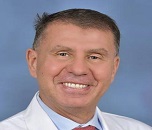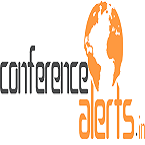Sessions and Tracks
Track 01: Neonatal Intensive Care
Neonatal Intensive Care Units are specialized hospital environments that provide life-sustaining care to newborns requiring advanced medical support. These units are essential for managing complications such as respiratory distress, low birth weight, prematurity, congenital anomalies, and infections. They are equipped with sophisticated technology, including incubators, high-frequency ventilators, infusion pumps, and continuous monitoring systems that allow for precise control of temperature, oxygenation, and nutritional delivery. A multidisciplinary team of neonatologists, neonatal nurses, respiratory therapists, clinical pharmacists, dietitians, and developmental therapists work in unison to stabilize and nurture fragile newborns. The care strategies implemented in Neonatal Intensive Care Units aim not only to ensure survival but also to optimize long-term neurological and physical development. Family-centered care is an essential component of modern neonatal care, encouraging parental involvement in practices such as skin-to-skin contact and breast milk feeding. Technological advancements such as real-time bedside ultrasound, telehealth consultation, and machine learning algorithms for early detection of complications are shaping the future of neonatal care. Ethical issues concerning the resuscitation and intensive care of extremely premature infants require collaborative decision-making between healthcare providers and families. Although survival rates have improved significantly in high-resource settings, inequities in access to neonatal intensive care persist in many parts of the world. Continued efforts to expand infrastructure, train professionals, and develop policies focused on maternal and neonatal health are vital to bridging this gap and ensuring the best start to life for all infants.
Track 02: Premature Birth Complications
Premature birth, defined as delivery before thirty-seven completed weeks of gestation, remains one of the primary causes of neonatal mortality and long-term morbidity across the globe. Infants born prematurely face a range of medical complications due to underdeveloped organ systems, including respiratory distress syndrome, intraventricular hemorrhage, necrotizing enterocolitis, retinopathy of prematurity, sepsis, feeding intolerance, and temperature instability. The degree of prematurity directly influences the severity of these outcomes. Immediate and specialized care in Neonatal Intensive Care Units is crucial to mitigate risks and promote survival. Therapeutic interventions include the administration of antenatal corticosteroids to enhance fetal lung maturity, surfactant therapy, controlled oxygen delivery, parenteral nutrition, and advanced respiratory support. Prevention strategies focus on improving maternal health, identifying and managing infections, minimizing elective early deliveries, and providing adequate prenatal care. Despite improved survival rates due to advances in neonatal medicine, many surviving infants require ongoing developmental support to address issues such as cerebral palsy, cognitive impairment, and sensory deficits. Structured follow-up programs that involve neurologists, pediatricians, occupational therapists, and developmental psychologists are essential to ensure early intervention. Health education, maternal support, and community-based outreach are critical to reducing the global burden of prematurity. Continuous research into the molecular, environmental, and genetic causes of premature birth is necessary to develop novel preventative and therapeutic approaches that improve the life trajectories of these vulnerable infants.
Track 03: Neonatal Respiratory Disorders
Neonatal respiratory disorders are among the most frequent and serious conditions affecting newborns, particularly those born prematurely or with low birth weight. These disorders include respiratory distress syndrome, meconium aspiration syndrome, transient tachypnea of the newborn, congenital diaphragmatic hernia, bronchopulmonary dysplasia, and neonatal pneumonia. Respiratory distress syndrome, the most common of these, results from a deficiency of surfactant and leads to impaired gas exchange and lung collapse in premature infants. Meconium aspiration syndrome occurs when a newborn inhales meconium-stained amniotic fluid into the lungs, often leading to airway obstruction and inflammation. Management strategies include the use of exogenous surfactant therapy, nasal continuous positive airway pressure, high-flow nasal oxygen therapy, and mechanical ventilation. Diagnosis is guided by physical examination, blood gas analysis, chest radiography, and increasingly, bedside lung ultrasound. Advances in minimally invasive surfactant administration, oxygen targeting strategies, and early caffeine use have contributed significantly to reducing the incidence and severity of chronic respiratory diseases such as bronchopulmonary dysplasia. Antenatal interventions such as corticosteroid administration and delayed cord clamping further support lung development. Multidisciplinary respiratory care, along with family education and follow-up, is crucial to ensure continued respiratory health beyond the neonatal period. Innovation in non-invasive monitoring tools and precision medicine will likely shape the future of neonatal respiratory care, reducing complications and improving long-term outcomes.
Track 04: Neonatal Nutrition Strategies
Nutrition in the neonatal period plays an essential role in determining short-term survival and long-term growth and neurodevelopmental outcomes, especially for preterm and medically fragile newborns. Human breast milk is the optimal source of nutrition for neonates, providing an ideal balance of macronutrients and micronutrients, along with immunologic and anti-inflammatory components that protect against infections and promote gastrointestinal maturation. For very low birth weight infants, human milk may be fortified with additional proteins, minerals, and vitamins to meet increased metabolic demands. In cases where the mother’s milk is unavailable, pasteurized donor milk is recommended over formula, particularly in the first few weeks of life. When enteral feeding is not feasible, parenteral nutrition is used to deliver essential nutrients intravenously, including glucose, amino acids, lipids, electrolytes, and trace elements. The early initiation of minimal enteral feeds, known as trophic feeding, is used to stimulate gut motility and reduce the risk of necrotizing enterocolitis. Individualized nutrition plans based on growth monitoring, laboratory values, and metabolic needs are crucial in preventing malnutrition and ensuring optimal development. A coordinated nutrition support team, including neonatologists, clinical dietitians, lactation consultants, and pharmacists, is necessary for comprehensive care. Emerging research in neonatal nutrition includes the use of prebiotics, probiotics, and microbiome-targeted therapies to enhance gut health and immune development. Long-term nutritional surveillance post-discharge remains important to monitor catch-up growth and prevent obesity, metabolic syndrome, or nutrient deficiencies later in life. Education and support for families, especially concerning breastfeeding practices, are integral to successful nutritional outcomes in neonates.
Track 05: Congenital Anomalies Management
Congenital anomalies, also referred to as birth defects, are structural or functional abnormalities that arise during embryonic or fetal development and are present at birth. These anomalies can range from mild cosmetic conditions to life-threatening structural malformations involving the heart, brain, gastrointestinal tract, genitourinary system, and limbs. The early identification of congenital anomalies during pregnancy is often achieved through routine ultrasound screening, fetal echocardiography, and genetic testing. Prenatal diagnosis facilitates informed decision-making, appropriate delivery planning, and postnatal intervention. After birth, evaluation involves physical examination, imaging studies, laboratory investigations, and consultation with specialists to determine the severity and nature of the anomaly. Management typically requires coordinated efforts from neonatologists, pediatric surgeons, genetic counselors, cardiologists, orthopedic surgeons, and other subspecialists depending on the condition. Many anomalies, such as congenital heart defects or neural tube defects, require prompt surgical correction within the neonatal period. In cases of complex or multisystem involvement, long-term follow-up and rehabilitation services are crucial for optimal health and quality of life. Families benefit from psychological support and genetic counseling to understand recurrence risks and management pathways. Prevention strategies include periconceptional folic acid supplementation, maternal vaccination, avoidance of harmful substances during pregnancy, and control of chronic maternal conditions. Advances in fetal surgery, regenerative medicine, and gene therapy offer promising future interventions for managing severe congenital conditions in utero or shortly after birth. Reducing disparities in access to diagnostic and surgical care remains a global priority, especially in underserved regions where late diagnosis and limited treatment options lead to higher morbidity and mortality rates. A holistic and multidisciplinary approach is essential for achieving favorable outcomes and supporting affected families throughout the continuum of care.
Track 06: Pediatric Infectious Diseases
Pediatric infectious diseases remain a significant global concern, contributing to considerable morbidity and mortality in children under the age of five. Common infectious illnesses in this age group include respiratory tract infections such as pneumonia, bronchiolitis, and influenza; gastrointestinal infections leading to diarrhea and dehydration; and skin, urinary tract, and central nervous system infections. In addition, vaccine-preventable diseases such as measles, rubella, pertussis, and hepatitis continue to pose threats in areas with low immunization coverage. Effective disease control relies heavily on vaccination programs, timely diagnosis, and appropriate antimicrobial therapy. However, the rise of antimicrobial resistance has become a major public health challenge, necessitating the rational use of antibiotics and continuous surveillance. Nutritional support, improved sanitation, access to clean water, and public health education are equally important in disease prevention and management. In hospital settings, adherence to infection control protocols and rapid outbreak response mechanisms help prevent the spread of infectious agents. Pediatric infectious disease specialists are key in managing complex or recurrent infections and guiding immunization in children with underlying health conditions. Advances in molecular diagnostics, point-of-care testing, and vaccine development continue to transform pediatric infectious disease management. Global health initiatives aimed at increasing vaccine access and strengthening primary care systems play a pivotal role in reducing child mortality. By integrating clinical care, public health strategies, and community involvement, the burden of pediatric infectious diseases can be significantly reduced.
Track 07: Pediatric Emergency Medicine
Pediatric emergency medicine is a vital discipline that focuses on the immediate recognition, assessment, and treatment of acutely ill or injured children in emergency settings. Children present unique challenges in emergency care due to their differing anatomy, physiology, developmental stages, and communication abilities. Common pediatric emergencies include respiratory distress, febrile seizures, dehydration, trauma, anaphylaxis, poisoning, and infectious illnesses such as sepsis and meningitis. Timely triage, age-specific clinical assessment, and rapid stabilization are essential to prevent deterioration and long-term complications. Pediatric Advanced Life Support protocols guide the resuscitation of critically ill infants and children, incorporating algorithms for airway management, cardiac arrest, and shock. Emergency departments should be equipped with pediatric-sized equipment and staffed by professionals trained in pediatric pharmacology, dosing, and psychological support. Simulation-based training and continuing education help maintain competency in high-acuity scenarios. Trauma care in children follows a systematic approach based on Advanced Trauma Life Support principles, with attention to subtle signs of internal injury. Child protection and the identification of abuse or neglect are integral responsibilities in emergency care. Public health initiatives aimed at injury prevention, poison control, drowning prevention, and road safety contribute significantly to reducing pediatric emergency visits. With advancements in telehealth, rural and remote communities now have better access to pediatric emergency consultation. The overarching goal of pediatric emergency medicine is to provide compassionate, timely, and effective care that supports both the child and family during a crisis.
Track 08: Pediatric Cardiology Advances
Pediatric cardiology is a rapidly advancing field focused on the diagnosis and management of heart disorders in fetuses, infants, children, and adolescents. Congenital heart defects are the most common birth anomalies, encompassing a wide range of conditions from simple septal defects to complex structural malformations such as hypoplastic left heart syndrome and tetralogy of Fallot. Prenatal diagnosis through fetal echocardiography enables early planning for delivery and intervention, while postnatal evaluation involves echocardiography, electrocardiography, cardiac catheterization, and magnetic resonance imaging. Therapeutic advances include minimally invasive procedures such as transcatheter device closures and balloon valvuloplasty, as well as open-heart surgeries and staged reconstructions. Acquired heart conditions in children, including rheumatic heart disease, Kawasaki disease, myocarditis, and arrhythmias, require prompt diagnosis and long-term monitoring. Pediatric heart transplantation remains a life-saving option for end-stage heart failure, supported by innovations in immunosuppression and rejection monitoring. Longitudinal follow-up is critical for monitoring cardiac function, growth, and psychosocial development. Precision medicine, genetic testing, three-dimensional imaging, and regenerative therapies are reshaping diagnostic and therapeutic approaches in pediatric cardiology. Despite significant progress, challenges remain in ensuring access to specialized cardiac care, particularly in low-resource settings. Collaborative networks, early screening programs, and global health initiatives are essential to address these disparities and improve cardiac outcomes for children worldwide.
Track 09: Pediatric Endocrinology Disorders
Pediatric endocrinology addresses hormonal disorders in children that affect growth, metabolism, development, and reproductive function. Conditions managed in this field include type one diabetes mellitus, growth hormone deficiency, hypothyroidism, hyperthyroidism, congenital adrenal hyperplasia, disorders of sexual differentiation, and abnormalities of puberty such as precocious or delayed onset. These disorders often present subtly and require specialized evaluation including hormone assays, stimulation tests, genetic studies, and imaging of endocrine organs. Type one diabetes mellitus is one of the most prevalent pediatric endocrine diseases and necessitates lifelong insulin therapy, blood glucose monitoring, dietary regulation, and psychosocial support. Early detection of thyroid dysfunction is particularly critical to prevent developmental delays, especially in congenital hypothyroidism. Disorders of growth and puberty can be emotionally distressing and impact social development, necessitating individualized therapeutic strategies and counseling. Management often involves hormone replacement therapies, lifestyle modifications, and coordination with dietitians, psychologists, and school health services. Emerging technologies such as continuous glucose monitoring, insulin pumps, and digital health tools are revolutionizing diabetes management. Research in pediatric endocrinology is expanding into areas such as molecular genetics, epigenetics, and metabolic programming, offering new avenues for diagnosis and treatment. Comprehensive care in pediatric endocrinology involves not only correcting hormonal imbalances but also supporting the child’s emotional well-being, educational success, and long-term health.
Track 10: Developmental and Behavioral Pediatrics
Developmental and behavioral pediatrics is a vital subspecialty that focuses on the evaluation, diagnosis, and management of developmental delays, learning disorders, behavioral challenges, and emotional issues in children. This field addresses a wide range of conditions including autism spectrum disorders, attention-deficit hyperactivity disorder, speech and language delays, intellectual disabilities, learning difficulties, and behavioral disturbances associated with medical conditions. Early identification of developmental problems is critical and typically begins with routine screening during well-child visits, followed by formal developmental assessments conducted by interdisciplinary teams comprising pediatricians, psychologists, speech-language pathologists, occupational therapists, and educational specialists. Intervention during the early years of life significantly improves outcomes and supports academic achievement, social-emotional growth, and adaptive functioning. A comprehensive approach involves not only the child but also family members, educators, and community service providers to ensure consistent support across settings. Behavioral interventions, parent training programs, individualized education plans, and therapy services are customized to each child’s strengths and needs. Psychopharmacologic treatment may be considered in specific cases, such as severe attention-deficit hyperactivity disorder or anxiety, and requires careful monitoring. With increased awareness and advocacy, more families are seeking support for children with developmental and behavioral challenges, yet disparities in access to diagnostic and therapeutic services persist. Cultural attitudes, language barriers, and limited mental health resources can delay care and affect outcomes. Public health strategies must include community education, funding for early intervention programs, and support for inclusive education policies. As neuroscience advances, there is growing understanding of the genetic, environmental, and social determinants of child development. The integration of precision diagnostics, neurodevelopmental monitoring, and telehealth will continue to enhance the reach and effectiveness of developmental and behavioral pediatric services worldwide.
Track 11: Neonatal Sepsis and Infections
Neonatal sepsis is a life-threatening condition characterized by a systemic inflammatory response to bacterial, viral, or fungal infections occurring in the first twenty-eight days of life. It remains a major contributor to neonatal morbidity and mortality, particularly in low-resource settings. Neonatal infections are typically classified as early-onset, occurring within the first seventy-two hours of life and often transmitted vertically from the mother, or late-onset, which typically arises from nosocomial or community exposure. Common pathogens include Group B Streptococcus, Escherichia coli, Klebsiella species, Staphylococcus aureus, and in some regions, fungi such as Candida albicans. Risk factors for neonatal sepsis include premature birth, prolonged rupture of membranes, maternal infections, low birth weight, and invasive medical procedures. Clinical signs are often nonspecific and may include temperature instability, respiratory distress, lethargy, feeding intolerance, and hypotension. Timely diagnosis requires a high index of suspicion and relies on laboratory tests such as blood cultures, complete blood count, C-reactive protein levels, and procalcitonin, although none are definitive alone. Advanced molecular diagnostics and rapid multiplex polymerase chain reaction testing are improving early detection. Empirical antibiotic therapy is initiated promptly and then adjusted based on culture results and sensitivity patterns. In resource-limited settings, delays in diagnosis and inappropriate antibiotic use contribute to higher mortality and antimicrobial resistance. Prevention strategies include maternal screening for Group B Streptococcus, sterile delivery practices, and judicious use of central lines and other invasive equipment. The use of probiotics, early breastfeeding, and immune-boosting strategies also show promise in reducing infection risk. Neonatal sepsis requires a coordinated response involving neonatologists, microbiologists, infection control teams, and intensive care specialists. Continued research into host-pathogen interactions, antibiotic stewardship, and vaccine development is essential to reduce the global burden of neonatal infections.
Track 12: Pediatric Neurological Disorders
Pediatric neurological disorders encompass a wide range of conditions affecting the brain, spinal cord, peripheral nerves, and muscles in infants, children, and adolescents. These disorders include epilepsy, cerebral palsy, neurogenetic disorders, neuromuscular diseases, hydrocephalus, brain malformations, traumatic brain injuries, and developmental delays due to structural or functional brain abnormalities. Early recognition and intervention are crucial to prevent long-term disabilities and optimize developmental outcomes. Clinical evaluation often begins with a detailed history, neurological examination, and may include electroencephalography, magnetic resonance imaging, genetic testing, and metabolic workup. Management is highly individualized and often multidisciplinary, involving pediatric neurologists, rehabilitation therapists, neuropsychologists, educators, and social workers. Epilepsy is among the most common neurological disorders in children and may require anticonvulsant medications, ketogenic diet therapy, or in some cases, surgical intervention. Cerebral palsy, resulting from early brain injury, presents with motor dysfunction and may require physical therapy, orthopedic support, and speech-language services. Advances in neuroimaging, genomics, and biomarkers are enhancing the diagnosis and understanding of complex neurological disorders. Neurodevelopmental monitoring tools allow clinicians to track progress and adjust therapy accordingly. Family education, psychological counseling, and community support systems play essential roles in improving the quality of life for affected children. Research into neuroplasticity and regenerative therapies, including stem cell treatments, holds potential for future breakthroughs. However, disparities in access to pediatric neurology care, especially in rural and underserved areas, continue to impact early diagnosis and management. Integration of tele-neurology, mobile screening services, and community-based rehabilitation can help bridge these gaps. Pediatric neurological disorders represent a lifelong journey for many families, requiring continuous support, adaptive care strategies, and collaboration among healthcare providers, educators, and caregivers.
Track 13: Pediatric Oncology
Pediatric oncology is a specialized field dedicated to the diagnosis and treatment of cancers in children and adolescents, which differ significantly from adult cancers in terms of biology, treatment protocols, and survivorship. The most common types of pediatric cancers include acute lymphoblastic leukemia, brain tumors, neuroblastoma, Wilms tumor, osteosarcoma, and lymphoma. Advances in chemotherapy, radiation therapy, immunotherapy, and surgical techniques have led to remarkable improvements in survival rates, particularly in high-income countries where up to eighty percent of children with cancer can be cured. Diagnosis often begins with clinical examination, laboratory tests, imaging studies such as magnetic resonance imaging or computed tomography scans, and biopsy for histopathological confirmation. Treatment plans are based on the type, stage, and genetic profile of the cancer and often involve multimodal strategies. Pediatric oncology care requires a multidisciplinary team, including pediatric oncologists, hematologists, surgeons, radiation oncologists, nurses, psychologists, and social workers. Supportive care is a critical component and includes infection control, nutritional support, pain management, psychosocial support, and fertility preservation counseling. Children undergoing cancer treatment are at risk for side effects such as immunosuppression, growth impairment, cognitive delays, and secondary malignancies, necessitating long-term survivorship care and monitoring. Psychosocial support for patients and families is vital, as a cancer diagnosis profoundly affects emotional well-being, academic participation, and family dynamics. In many parts of the world, however, access to early diagnosis and comprehensive care remains limited due to a lack of infrastructure, trained personnel, and essential medications. Global initiatives, such as the World Health Organization’s Global Initiative for Childhood Cancer, aim to close the survival gap by strengthening healthcare systems, improving access to treatment, and supporting palliative care services. Pediatric oncology continues to evolve with breakthroughs in targeted therapies, genomic profiling, and immunotherapy, offering new hope for children and families facing cancer.
Track 14: Pediatric Surgery and Anesthesia
Pediatric surgery and anesthesia encompass the surgical treatment of congenital and acquired conditions in children, from the neonatal period through adolescence, and require a specialized understanding of pediatric anatomy, physiology, and developmental needs. Pediatric surgeons address a broad spectrum of conditions including congenital malformations, hernias, gastrointestinal anomalies, trauma, tumors, and urological disorders. Neonatal surgery represents one of the most demanding areas, involving critical conditions such as congenital diaphragmatic hernia, tracheoesophageal fistula, and intestinal atresia. Surgical intervention in children must be tailored to their size, organ maturity, and unique healing processes. Pediatric anesthesiologists play a crucial role in ensuring the safety and comfort of children undergoing surgery, using age-appropriate dosages, airway management techniques, and monitoring systems. Preoperative preparation involves thorough evaluation of medical history, nutritional status, and potential anesthetic risks. Pain management is a priority, with the use of multimodal analgesia and child-friendly techniques to reduce anxiety and promote recovery. Advances in minimally invasive and robotic-assisted surgery have reduced operative trauma, hospital stays, and complications in pediatric patients. Postoperative care involves monitoring for infection, nutritional support, early mobilization, and family education for home recovery. Pediatric surgical services must be coordinated with neonatology, intensive care, radiology, pathology, and rehabilitation teams to achieve the best outcomes. Global disparities in access to safe pediatric surgical care are significant, with many children in low-income countries lacking timely interventions for treatable conditions. Efforts to expand surgical capacity, train specialists, and provide essential equipment are critical components of global child health strategies. Continued innovation in surgical techniques, anesthesia safety, and perioperative care will further improve survival, reduce complications, and enhance the overall well-being of pediatric surgical patients.
Track 15: Pediatric Immunology and Allergy
Pediatric immunology and allergy is a field concerned with disorders of the immune system in children, ranging from primary immunodeficiencies to hypersensitivity reactions such as asthma, eczema, food allergies, and allergic rhinitis. Children with immune system dysfunction may experience recurrent infections, poor growth, autoimmune complications, or life-threatening allergic responses. Primary immunodeficiency disorders, although rare, often present early in life with severe bacterial, viral, or fungal infections and require specialized diagnostic testing including flow cytometry, immunoglobulin quantification, and genetic analysis. Prompt diagnosis is essential to prevent irreversible damage and initiate treatments such as immunoglobulin replacement therapy, prophylactic antibiotics, or hematopoietic stem cell transplantation. On the other hand, allergic diseases are increasingly common and are linked to environmental exposures, dietary changes, and genetic susceptibility. Food allergies may manifest as skin rashes, vomiting, respiratory difficulty, or anaphylaxis, requiring rapid intervention with epinephrine and long-term avoidance of allergens. Asthma, the most prevalent chronic respiratory disorder in children, involves inflammation and hyper-responsiveness of the airways, and is managed through inhaled corticosteroids, bronchodilators, and personalized action plans. Pediatric allergists utilize skin prick testing, serum-specific immunoglobulin E measurements, and elimination diets to identify triggers and guide therapy. Immunotherapy is an emerging treatment option for selected allergies, providing gradual desensitization to offending allergens. Education of families, schools, and caregivers is crucial in the management of allergic disorders to prevent accidental exposures and ensure emergency preparedness. Psychosocial effects of chronic immune or allergic conditions, such as anxiety, social exclusion, and dietary limitations, must be addressed through supportive counseling and multidisciplinary care. Research in pediatric immunology is advancing rapidly, with new insights into the microbiome, epigenetic regulation, and biologic therapies that target specific inflammatory pathways. These developments hold the potential to not only manage but also modify the course of immune-mediated diseases in children. Equitable access to specialized immunology services and allergy diagnostics remains a global health priority, especially as allergic diseases continue to rise in prevalence across all socioeconomic settings.
Track 16: Growth and Nutrition in Childhood
Growth and nutrition in childhood form the cornerstone of physical health, cognitive development, and disease prevention. Proper nutrition ensures adequate linear growth, optimal brain development, immune competence, and resilience against infections and chronic diseases. Malnutrition, whether due to undernutrition, micronutrient deficiencies, or overnutrition, poses significant health risks and remains a public health concern globally. Stunting, wasting, and underweight continue to affect millions of children in low- and middle-income countries, while overweight and obesity are rising rapidly due to poor dietary habits and reduced physical activity. A child’s nutritional needs vary significantly across different age groups, with critical windows in infancy, early childhood, and adolescence. Exclusive breastfeeding for the first six months of life followed by timely introduction of safe, nutrient-rich complementary foods is vital for growth and development. Iron, iodine, vitamin A, and zinc are among the most important micronutrients for children, and their deficiencies can lead to anemia, goiter, blindness, impaired immunity, and delayed development. Growth monitoring using standardized charts and regular nutritional assessments are key strategies in pediatric practice to detect and address problems early. Nutritional interventions may include fortified foods, oral supplements, therapeutic feeding programs, or dietary counseling depending on the child’s age, condition, and socioeconomic environment. School-based nutrition programs and public health campaigns play a role in promoting healthy dietary behaviors and physical activity. Parental education on food choices, portion control, and the long-term effects of nutrition is essential for creating sustainable habits. Pediatricians, dietitians, and community health workers must collaborate to develop individualized plans that address medical conditions, food allergies, and psychosocial issues related to feeding. Advances in nutritional science are leading to personalized approaches based on genetics, metabolic profiles, and the gut microbiome. Ensuring food security, access to affordable healthy foods, and support for maternal nutrition are also vital for preventing childhood malnutrition. An integrated and culturally sensitive approach to growth and nutrition is necessary to support every child’s right to a healthy and productive life.
Track 17: Neonatal Pain and Comfort Management
Neonatal pain and comfort management is an essential component of compassionate and evidence-based care for newborns, especially those in Neonatal Intensive Care Units. For many years, there was a misconception that neonates, particularly preterm infants, do not perceive pain in the same way as older children or adults. However, research has conclusively demonstrated that neonates experience pain and that unrelieved pain can lead to short-term physiological instability and long-term alterations in stress response, brain development, and behavior. Pain in neonates may result from routine procedures such as heel sticks, venipunctures, intubation, suctioning, or surgery, and requires both pharmacological and non-pharmacological management. Assessment of neonatal pain is challenging due to their limited ability to express discomfort; therefore, clinicians rely on validated pain assessment tools that evaluate facial expressions, body movements, and physiological parameters. Non-pharmacological interventions are especially important for mild to moderate procedural pain and include swaddling, non-nutritive sucking, oral sucrose, skin-to-skin contact, and breastfeeding. These methods not only provide comfort but also enhance parent-infant bonding and neurodevelopmental outcomes. For more severe or persistent pain, medications such as acetaminophen, local anesthetics, opioids, and sedatives may be administered with careful monitoring for side effects. Pain prevention is equally important, and strategies include clustering of procedures, minimizing invasive interventions, and using less painful techniques when possible. Creating a healing environment with reduced noise, dim lighting, and consistent caregiving routines supports neonatal comfort and sleep. Interdisciplinary collaboration among neonatologists, nurses, pharmacists, and parents is essential to implement effective pain management strategies tailored to each infant. Education and training of healthcare providers in neonatal pain assessment and intervention are crucial for improving care quality. Research in this field continues to explore the long-term effects of early pain exposure, the efficacy of alternative therapies, and the development of more accurate pain assessment technologies. Acknowledging and addressing pain in neonates reflects a fundamental commitment to humane and developmentally appropriate medical care.
Track 18: Adolescent Medicine and Transition of Care
Adolescent medicine is a specialized area within pediatrics that focuses on the unique medical, psychological, and social needs of individuals between the ages of ten and nineteen. This developmental stage is marked by rapid physical growth, hormonal changes, emotional maturation, and the formation of personal identity. Adolescents face a range of health issues including puberty-related concerns, menstrual disorders, acne, mental health challenges, eating disorders, substance use, sexual and reproductive health issues, and risk-taking behaviors. A patient-centered, confidential, and nonjudgmental approach is essential in building trust and ensuring effective communication. Screening for mental health conditions, substance use, and risk behaviors should be incorporated into routine adolescent healthcare visits, along with education on healthy lifestyle choices, nutrition, exercise, and sleep hygiene. Vaccinations such as the human papillomavirus vaccine, meningococcal vaccine, and booster doses of tetanus, diphtheria, and pertussis are particularly important during adolescence. A major aspect of adolescent medicine involves preparing young people with chronic medical conditions for the transition from pediatric to adult healthcare systems. This transition requires careful planning, assessment of readiness, education on self-management skills, and coordination between pediatric and adult care teams. Common challenges include gaps in care, loss of insurance coverage, and lack of adult providers with experience in managing complex childhood-onset conditions. Adolescent medicine providers must advocate for comprehensive and accessible services, including mental health support, reproductive care, and substance use counseling. Culturally sensitive and gender-inclusive care models help address disparities and promote health equity. Advances in digital health, telemedicine, and peer-support programs are enhancing the reach and effectiveness of adolescent healthcare services. By supporting adolescents during this critical phase of life and empowering them to take responsibility for their health, pediatricians contribute to the foundation of lifelong wellness and well-informed healthcare behaviors.
Track 19: Pediatric Rheumatology and Autoimmune Diseases
Pediatric rheumatology focuses on the diagnosis and management of autoimmune and musculoskeletal disorders in children, including juvenile idiopathic arthritis, systemic lupus erythematosus, juvenile dermatomyositis, vasculitis, scleroderma, and autoinflammatory syndromes. These chronic diseases are characterized by inappropriate immune responses that lead to inflammation, joint pain, stiffness, skin rashes, organ damage, and impaired physical function. Early recognition and intervention are essential to prevent irreversible joint damage, growth abnormalities, and systemic complications. The diagnostic process often involves a combination of clinical evaluation, laboratory testing for inflammatory markers and autoantibodies, imaging studies such as magnetic resonance imaging and ultrasound, and, in some cases, tissue biopsies. Treatment strategies include nonsteroidal anti-inflammatory drugs, corticosteroids, disease-modifying antirheumatic drugs, and biologic agents that target specific immune pathways. Multidisciplinary care involving pediatric rheumatologists, physical therapists, occupational therapists, psychologists, and school counselors ensures comprehensive management of medical, functional, and psychosocial aspects of the disease. Education and support for families are crucial in fostering adherence to treatment, recognizing flare-ups, and promoting active participation in care. Physical activity and rehabilitation are encouraged to maintain joint mobility and strength. Chronic autoimmune diseases can significantly impact a child’s mental health, academic performance, and social relationships, making mental health support an integral part of care. Research in pediatric rheumatology is advancing through studies on genetic predisposition, environmental triggers, and immunomodulatory therapies, offering hope for more precise and effective treatments. Access to pediatric rheumatology care remains limited in many regions, underscoring the need for awareness, training, and policy initiatives to improve diagnostic and treatment capabilities. With early diagnosis, individualized therapy, and sustained support, many children with autoimmune diseases can lead healthy, active, and fulfilling lives.
Track 20: Pediatric Mental Health and Emotional Well-being
Pediatric mental health and emotional well-being have become increasingly recognized as critical components of overall child health, with growing awareness of the impact that psychological stress, trauma, and environmental factors can have on emotional development. Mental health issues in children and adolescents include anxiety disorders, depression, attention-deficit hyperactivity disorder, autism spectrum disorders, conduct disorders, eating disorders, and post-traumatic stress. The onset of these conditions often occurs during childhood or adolescence and can significantly affect school performance, relationships, physical health, and future opportunities. Early identification and intervention are key to preventing long-term consequences and promoting resilience. Pediatricians play an essential role in routine mental health screening, offering guidance to parents, and facilitating referrals to mental health professionals. Behavioral assessments, psychological testing, family interviews, and observation in multiple environments help in accurate diagnosis and personalized care planning. Evidence-based therapies such as cognitive-behavioral therapy, play therapy, family therapy, and in some cases, pharmacologic treatment, are used to manage symptoms and support development. The involvement of schools, caregivers, and communities is vital in creating supportive environments that reduce stigma and foster open communication. Cultural factors, family dynamics, and socioeconomic stressors must be considered in the treatment plan to ensure culturally competent and relevant care. The global rise in pediatric mental health concerns, exacerbated by factors such as social media exposure, academic pressures, family instability, and the aftermath of the coronavirus pandemic, underscores the urgency of building robust mental health systems for children. Telepsychiatry, school-based interventions, and community mental health outreach are expanding access to services in underserved areas. Public health campaigns and policy reforms focused on early childhood development, parental education, and child protection can help address root causes and promote preventive care. Multidisciplinary collaboration between pediatricians, child psychologists, psychiatrists, educators, and social workers ensures that mental health care is holistic, integrated, and tailored to each child’s needs. Supporting mental health from infancy through adolescence is essential for nurturing confident, emotionally resilient individuals who can thrive in school, relationships, and society. The promotion of emotional well-being must become a fundamental priority within pediatric care models worldwide to ensure every child is given the opportunity to reach their full potential.




















